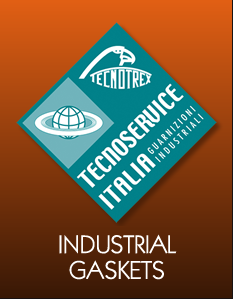The metallic materials used in spiral wound gaskets are different for the diverse needs of elasticity, corrosion resistance and chemical resistance required in the various fields of application.
Steels
Carbon steels are the most economic and versatile in industry, have an excellent ductility and optimal mechanical properties that can be improved through appropriate heat treatment. One of the limitations of their use is low resistance to corrosion. To this end, and to improve some mechanical properties, steels are additized with other metals (Ni, Cr, Si, Mo, Ti, etc.). Depending on the quantity and type, steels can be divided into:
• Low bonded steels
• Stainless steels
• Medium bonded steels
• Highly bonded steels
• Bonded steels
Low Bonded Steels
Belonging to this category are steels with percentages of additives on the percentage point.
We can affirm that:
Nickel: Increases the hardness and mechanical properties at low temperature, and in particular corrosion resistance.
Chromium/Si: Improves the hardness, abrasion resistance, corrosion resistance and oxidation resistance.
Molybdenum: High Temperature Load:
The addition of a few percentages of these elements determines the formation of a layer of oxide adhering to the surface that protects them from further oxidation. The corrosion resistance, from the liquid viewpoint, is instead the same as carbon steel.
Stainless Steels
There are more than 70 steels with the general composition of 12%-30% of Cr, or 22% of Ni
To these steels, alloys are added which have a strong resistance to corrosion.
We can divide them into three groups:
• Martensitic
• Ferritic
• Austenitic
Martensitic Steels
Contain from 12 to 30% of Chromium plus controlled C + additives. Typical steel in this category is AISI 410. Corrosion resistance is less than the other three groups.
Ferritic Steels
Contain from 15 to 30% Chromium with low carbon content, less than 0.1%. AISI 430 is a typical example. The corrosion resistance is good, even if ferritic steels don’t resist acids such as HC1 very well. They can be used to neutralize corrosive solutions, for example AISI 430 is used for air-nitric acid plants.
Austenitic Steels
The most corrosion resistant steels compared to the other two groups. They have an average composition of 15-26% Cr, 6022% nickel, while the percentages of carbon are kept low (0.08%) to minimize the percentages of carbide. These steels can be stabilized with the addition of titanium, tantalum and we will have the type AISI 321, AISI 348. Other types of steel instead have a level of carbon below 0.03% like AISI 304 and 316L. Finally, the addition of Molybdenum improves its corrosion resistance.
Medium Bonded Steels
This is a group restricted to alloys with a corrosion resistance that is higher than the stainless steels. A very common one is Alloy 20 with its various commercial names. Durimet 20 with a composition of 0.07 C 29% Ni, 20% Cr, Mo 2%, 3% Cu.
We have other alloys such as:
Incoloy 825 : 40% Ni, 21% Cr, 3% Mo, 2,25% Cu
Hastelloy G-3: 44% Ni, 22% Cr, 6.5% Mo, 0.05% C
Highly Bonded Steels
This group contains high percentages of Nickel.
Hastelloy B-2 61% Ni, 28% Mo, excellent resistance to acids such as hydrochloric, phosphoric and sulphuric.
Hastelloy C276, Inconel 625, etc.
|


